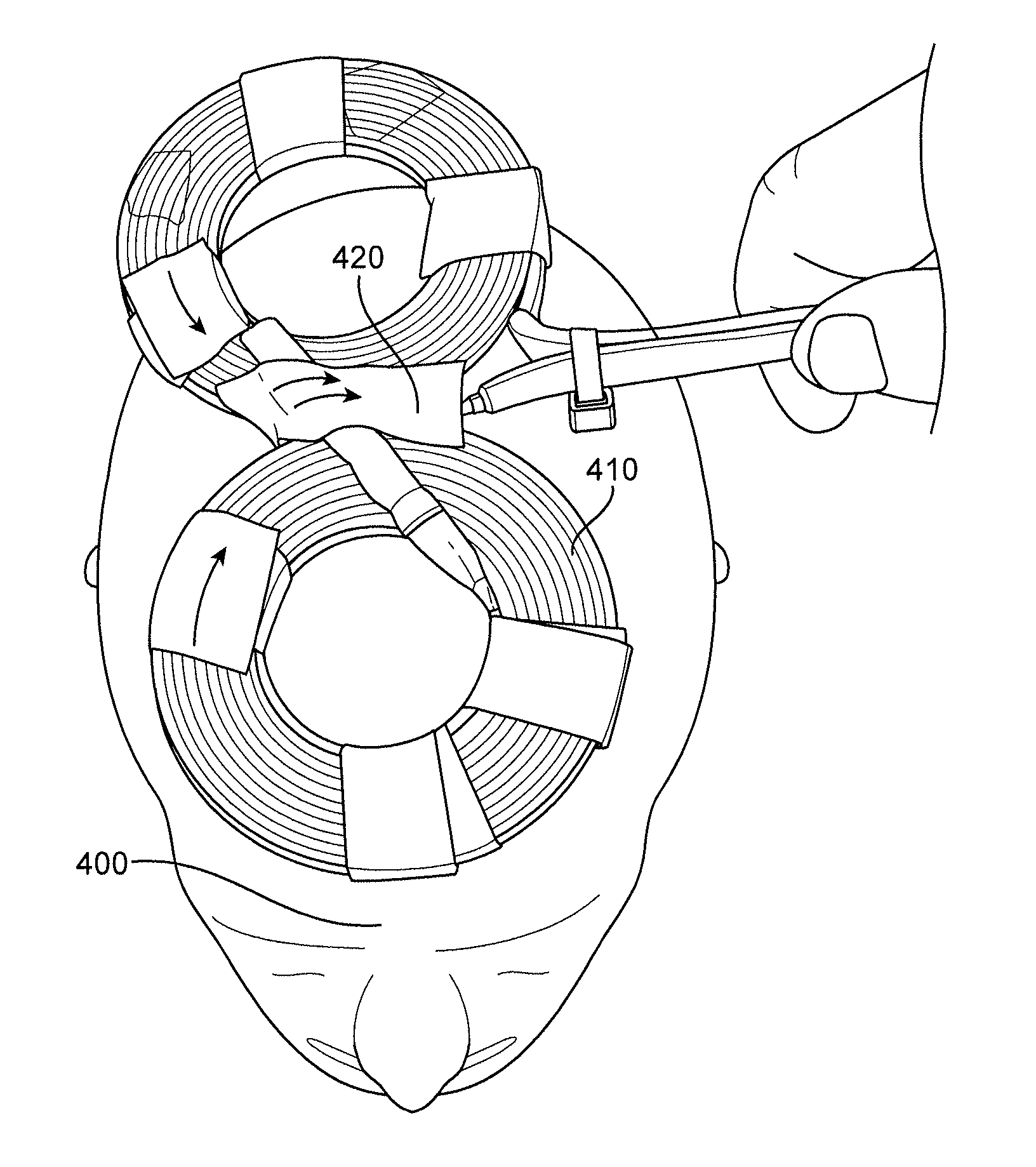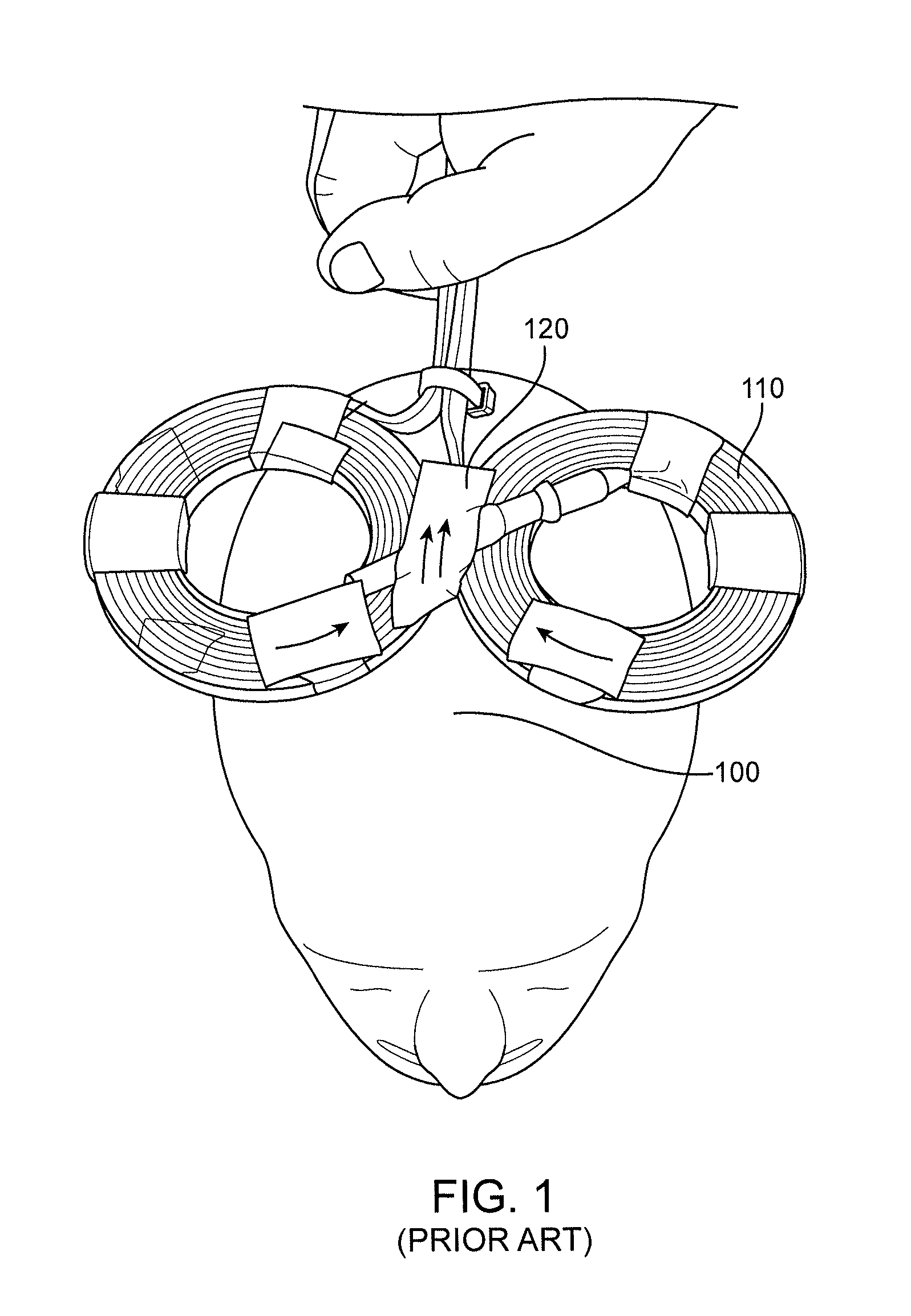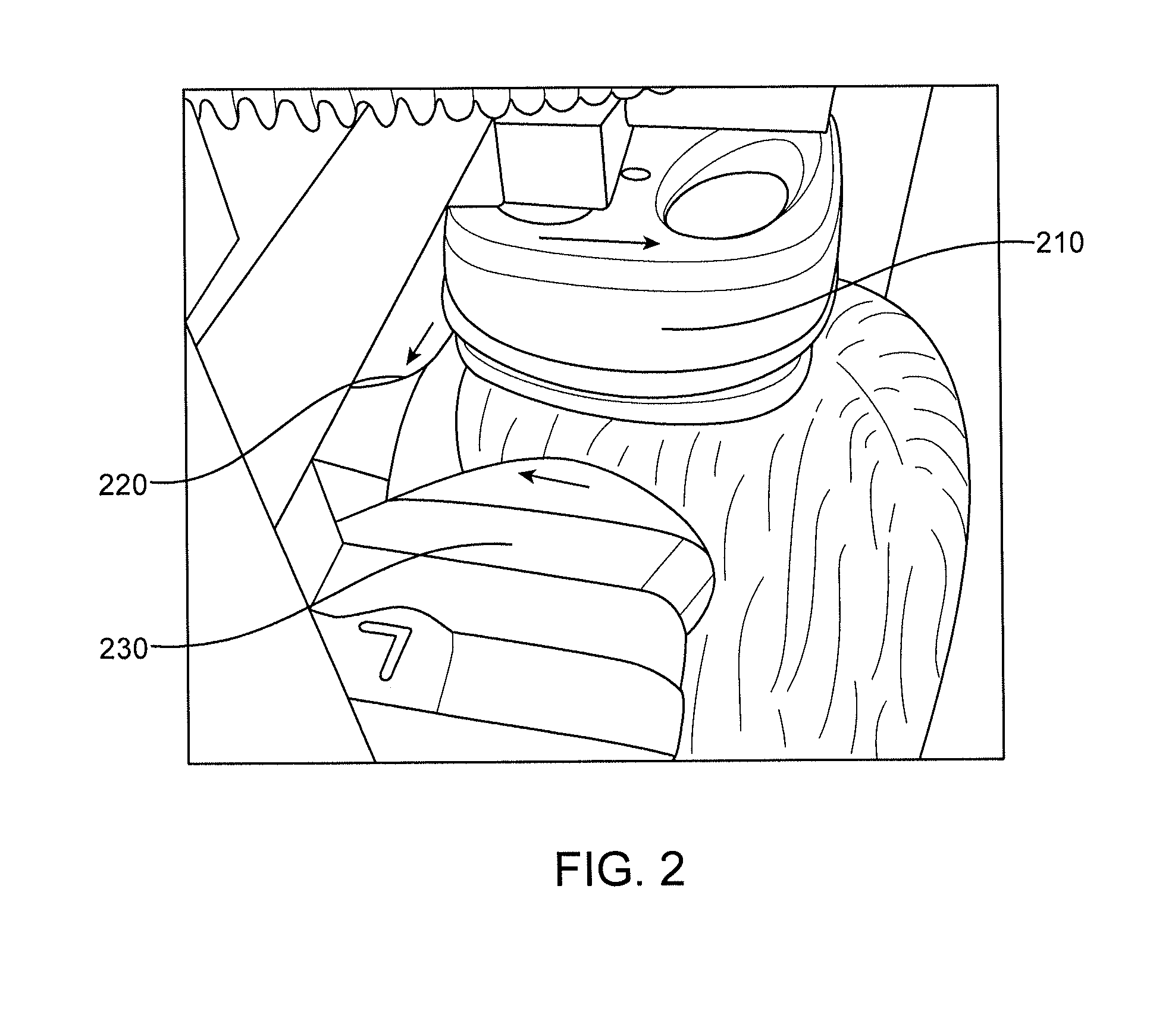Transcranial magnetic stimulation for improved analgesia
a transcranial magnetic stimulation and analgesic technology, applied in magnetotherapy, magnetotherapy using coils/electromagnets, magnetotherapy, etc., can solve the problems of not teaching specific methods for improving analgesia or antidepressant effects using transverse positioning, and unable to target the deep-brain white matter tract modulation, etc., to achieve the effect of reducing pain
- Summary
- Abstract
- Description
- Claims
- Application Information
AI Technical Summary
Benefits of technology
Problems solved by technology
Method used
Image
Examples
example 1
Steerable Electrical Currents Using Multi-Coil rTMS: Clinical Effects
[0108]This example describes the development and early clinical experience with a rTMS device having multiple coils (e.g., 4 coils) such as the ones described above. The system is designed to produce preferential stimulation of brain regions beneath the cortical surface via steerable electrical currents produced by the reconfiguration of the magnets which can accommodate the directional preference of specific brain structures.
[0109]Both acute pain and chronic pain have been linked to abnormal activity patterns in the dorsal anterior cingulate gyrus. At one time, surgical lesioning of the cingulate bundles was a commonly practiced treatment for severe, intractable pain. Accordingly, we hypothesized that: (1) induced currents can be steered to depth using a multi-coil approach; (2) multi-coil rTMS can preferentially modulate the dorsal anterior cingulate gyms while relatively sparing the cortical surface; (3) analges...
PUM
 Login to View More
Login to View More Abstract
Description
Claims
Application Information
 Login to View More
Login to View More - R&D
- Intellectual Property
- Life Sciences
- Materials
- Tech Scout
- Unparalleled Data Quality
- Higher Quality Content
- 60% Fewer Hallucinations
Browse by: Latest US Patents, China's latest patents, Technical Efficacy Thesaurus, Application Domain, Technology Topic, Popular Technical Reports.
© 2025 PatSnap. All rights reserved.Legal|Privacy policy|Modern Slavery Act Transparency Statement|Sitemap|About US| Contact US: help@patsnap.com



